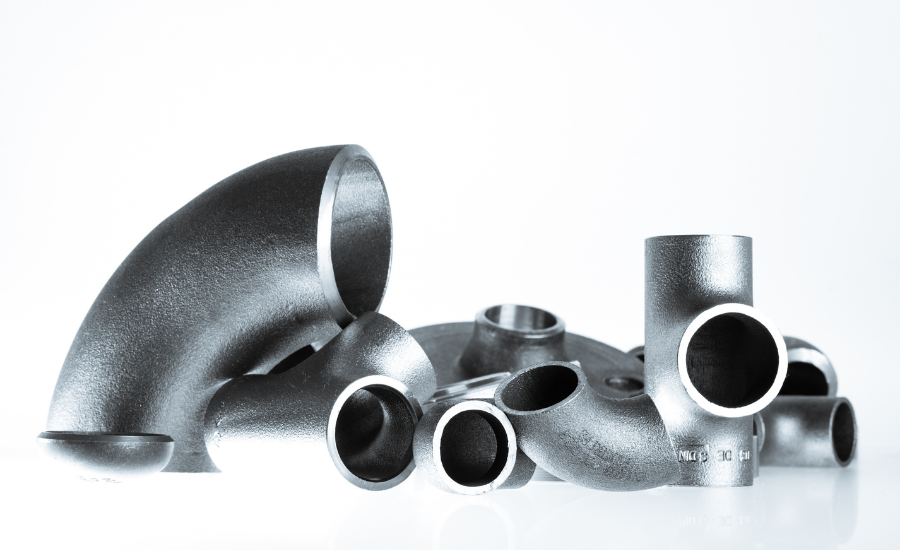In industries like oil & gas, petrochemicals, power generation, and construction, the reliability of a piping system depends heavily on one key component — butt-weld fittings. These fittings connect pipes by welding their ends together, ensuring smooth flow, leak-free joints, and high-pressure resistance. But if the fittings are of poor quality, the entire system’s safety and efficiency can be at risk.
That’s why verifying the quality of butt-weld fittings before purchase is absolutely crucial. Whether you’re sourcing them locally or importing from a manufacturer abroad, a careful inspection and quality verification process can save time, money, and potential failures.
Here’s a detailed guide on how to assess the quality of butt-weld fittings before making your purchase.
- Check for Material Certification and Traceability
The first step is to ensure that the fittings are made from the correct grade of material. Reputable manufacturers provide Material Test Certificates (MTCs) as per EN 10204 3.1 or 3.2 standards.
These certificates should mention:
- Material grade (e.g., ASTM A234 WPB, A403 WP304/316)
- Chemical composition and mechanical properties
- Heat number and batch traceability
- Applicable standards and test results
Always cross-verify that the heat number on the MTC matches the number stamped on the fitting. This traceability confirms that the product has undergone proper quality checks and is made from genuine raw material.
- Verify Dimensional Accuracy
Each butt-weld fitting — whether it’s an elbow, tee, reducer, or cap — must strictly conform to the dimensional standards specified by codes like ASME B16.9, B16.28, or MSS-SP-75.
Key dimensions to inspect include:
- Outer diameter (OD) and wall thickness
- Center-to-end dimensions for elbows and tees
- Concentricity and roundness
- Bevel angle (typically 37.5° for weld ends)
A deviation in even a few millimeters can cause alignment issues during installation and lead to welding defects or leakage later. Always request a dimensional inspection report or use precise gauges and calipers during inspection.
- Inspect Surface Finish and Workmanship
The external and internal surfaces of the fittings should be smooth, clean, and free from defects. Look for:
- No cracks, dents, or deep scratches
- No rust, oil, or foreign materials
- Properly formed bevel ends for easy welding
High-quality fittings also have uniform wall thickness and a clean internal surface to ensure smooth fluid flow. Any surface irregularities can affect both appearance and performance, especially under pressure.
- Conduct Non-Destructive Testing (NDT)
To verify internal soundness and detect hidden defects, manufacturers conduct various Non-Destructive Tests such as:
- Ultrasonic Testing (UT): Detects internal flaws like inclusions or voids.
- Radiographic Testing (RT): Ensures weld integrity and uniform metal density.
- Magnetic Particle or Dye Penetrant Testing (MT/PT): Detects surface cracks and imperfections.
Always ask the supplier for NDT reports. These tests ensure that the fittings meet the mechanical and safety requirements of critical applications.
- Review Pressure and Hydrostatic Test Reports
High-quality butt-weld fittings undergo pressure testing to confirm they can safely handle the rated working pressure. In a hydrostatic test, the fitting is filled with water and subjected to pressure higher than its operating limit to ensure there are no leaks or deformations.
These test certificates provide solid proof of a fitting’s performance and reliability under real-world conditions.
- Confirm Compliance with International Standards
Make sure the fittings comply with international standards such as:
- ASME B16.9 / B16.28 for dimensions
- ASTM A234 / A403 / A815 / A420 for materials
- ANSI / MSS-SP-75 for pressure ratings
- ISO 9001 / PED 2014/68/EU for manufacturing quality systems
Purchasing from a manufacturer certified to these standards ensures consistent production, inspection, and documentation practices.
- Evaluate Manufacturer Reputation and Quality Control Systems
Lastly, don’t overlook the manufacturer’s credibility. A strong track record, global client base, and ISO-certified facilities are indicators of reliability. Reputable suppliers maintain in-house quality control teams, advanced inspection equipment, and strict documentation systems for full traceability.
If possible, visit the manufacturer’s plant or request a third-party inspection from agencies like TÜV, BV, or SGS before shipment.
Conclusion
Verifying the quality of butt-weld fittings is more than just a formality — it’s an investment in safety, performance, and long-term reliability. By checking material certification, dimensional accuracy, surface finish, testing reports, and manufacturer credibility, you can confidently ensure that the fittings you purchase meet international standards.
In an industry where precision and safety are paramount, the difference between a good fitting and a substandard one could mean the difference between smooth operations and costly downtime. Always choose trusted forged fittings manufacturers in India who deliver quality, not just products.
